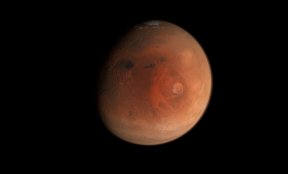Remember NASA's DART mission? That was the one that played out like a reenactment of the movie Armageddon. You know, train a bunch of good-looking people to be astronauts, and then send them out to divert an asteroid heading for Earth. Great premise for a sci-fi movie, but there's a lot more fiction than science in Armageddon. After all, this is the movie that holds the record for violating the greatest number of laws of physics per minute. Or at least it did until Moonfall came out. But that's not even worth discussing, let alone watching.
But before I go any further, jump on Google and type 'dart mission' into the search bar NOW! If it's still enabled, you'll get a cool little animation of the DART spacecraft flying across the search results page and hitting an image of Dimorphos before exploding in a cloud of dust. Thanks Google, we do enjoy little Easter eggs like that!
Now, back to DART. The Double Asteroid Redirection Test. I'm very happy we ended up with an acronym for that one. Anyway, DART impacted the asteroid (NASA calls it a moonlet) Dimorphos, while it orbited its parent asteroid Didymos, back in 2022. The idea was to assess how much we could deflect Dimorphos from its trajectory by ramming a spacecraft into it, and the answer turned out to be more than we expected. DART hit Dimorphos at about 22,000 km/hr and its orbit of Didymos went from 11 hours and 52 minutes to around 11 hours and 19 minutes. NASA was expecting its orbit to change by less than 10 minutes.
What they didn't anticipate was that there would be a much bigger change in momentum due to the rock blown off Dimorphos' surface in the collision than there would be from the initial impact of the spacecraft. Astronomers have found about 5-million kg of rock trailing the asteroid, including boulders as large as 6 or 7m across, clustered together in a couple of groups. It was this that provided the biggest kick to the asteroid. As any high school physics student will tell you, Newton said that for every action there has to be an equal and opposite reaction, and the ejection of all that rock was what gave it the extra kick, a bit like firing a bullet from a gun causes it to recoil.
Now this is sort of important. When NASA flew a spacecraft into comet 9P/Tempel in the Deep Impact mission (yeah) in 2005, the results were quite different. Deep Impact was not an attempt to divert the comet from its orbit (NASA wanted to study its interior), but the results of the collision were quite different to what was observed at Dimorphos. There were no large fragments, no clusters of ejected material, just vaporised rock going everywhere. The reason was that the surface of the comet was relatively smooth compared to the rocky Dimorphos.
And there's the catch. If some oversized rocky or icy body is found on a collision course with Earth, we are going to need to do a bit better than just using brute force with some elementary math if we want to precisely divert its track elsewhere. We need to know the makeup of its surface, and the mass and composition of the likely debris field that will be caused by a kinetic impactor. Otherwise, in the most pessimistic scenarios, we risk making things worse.
The European Space Agency has the Hera mission heading back to Dimorphos to take another look at it next year. The idea is to make the DART mission a well-understood and repeatable planetary defence technique. Apparently, Hollywood hasn't taught us everything we need to know about saving the planet from rogue space rocks, so now we need to go and get our science on.



